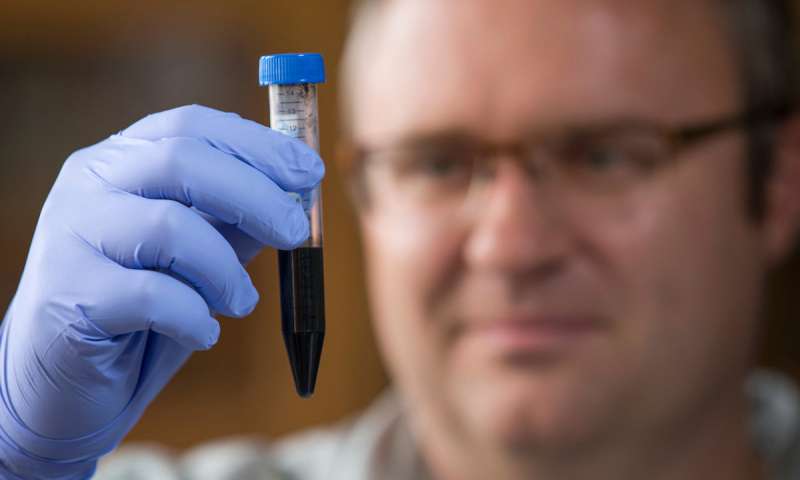

Contact: Manager Yang
Hotline: 950-4048-3964 (free)
Tel: 0510-85386636
Mobile: 18011518665
Shangmeng Technology Wuxi Co., Ltd.
Address: A1-602, Tianan Smart City, No. 228 Linghu Avenue, Xinwu District, Wuxi City, Jiangsu Province
Recently, scientists at the University of Iowa in the United States have developed a low-cost, flexible and washable inkjet printing circuit technology. The core material of the ink is graphene oxide. It is also the world's first hydrophobic circuit printing technology. The results were published in the journal Nanoscale . For details, see the English report and the full paper.

The nanotechnology "would lend enormous value to self-cleaning wearable/washable electronics that are resistant to stains, or ice and biofilm formation," according to a recent paper describing the discovery.
"We're taking low-cost, inkjet-printed graphene and tuning it with a laser to make functional materials," said Jonathan Claussen, an Iowa State University tourist professor of mechanical engineering, an associate of the US Department of Energy's Ames Laboratory and The corresponding author of the paper recently featured on the cover of the journal Nanoscale .
The paper describes how Claussen and the nanoengineers in his research group use inkjet printing technology to create electric circuits on flexible materials. In this case, the ink is flakes of graphene - the wonder material can be a great conductor of electricity and heat, plus it's Strong, stable and biocompatible.
The printed flakes, however, aren't highly conductive and have to be processed to remove non-conductive binders and weld the flakes together, boosting conductivity and making them useful for electronics or sensors.
But Claussen and his research group developed a rapid-pulse laser process that treats the graphene without damaging the printing surface - even if it's paper.
And now they've found another application of their laser processing technology: taking graphene-printed circuits that can hold water droplets (they're hydrophilic) and turning them into circuits that repel water (they're superhydrophobic).
"We're micro-patterning the surface of the inkjet-printed graphene," Claussen said. "The laser aligns the graphene flakes vertically - like little pyramids stacking up. And that's what induces the hydrophobicity."
Claussen said the energy density of the laser processing can be adjusted to tune the degree of hydrophobicity and conductivity of the printed graphene circuits.
And that opens up all kinds of possibilities for new electronics and sensors, according to the paper.
"One of the things we'd be interested in developing is anti-biofouling materials," said Loreen Stromberg, a paper co-author and an Iowa State postdoctoral research associate in mechanical engineering and for the Virtual Reality Applications Center. "This could eliminate The buildup of biological materials on the surface that would inhibit the optimal performance of devices such as chemical or biological sensors."
The technology could also have applications in flexible electronics, washable sensors in textiles, microfluidic technologies, drag reduction, de-icing, electrochemical sensors and technology that uses graphene structures and electrical simulation to produce stem cells for nerve regeneration.
The researchers wrote that further studies should be done to better understand how the nano- and microsurfaces of the printed graphene creates the water-repelling capabilities.
The current studies have been supported by grants from the National Science Foundation, the US Department of Agriculture's National Institute of Food and Agriculture, the Roy J. Carver Charitable Trust plus Iowa State's College of Engineering and department of mechanical engineering .
The Iowa State University Research Foundation is working to patent the technology and has optioned it to an Ames-based startup, NanoSpy Inc., for possible commercialization. NanoSpy, located at the Iowa State University Research Park, is developing sensors to detect salmonella and other Pathogens in food processing plants. Claussen and Stromberg are part of the company.
The graphene printing, processing and tuning technology is turning out to be very useful, Stromberg said. After all, "electronics are being incorporated into everything."
More information: Suprem R. Das et al, Superhydrophobic inkjet printed flexible graphene circuits via direct-pulsed laser writing, Nanoscale (2017). DOI: 10.1039/C7NR06213C
Address:Tianan Smart City A1-602, No. 228 Linghu Avenue, Xinwu District, Wuxi, Jiangsu, China TelePhone:0510-85386636 Fax:0510-85384339 E-mail:info@solmontech.com
KeyWord: